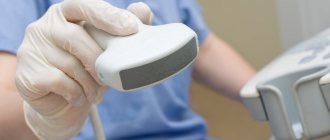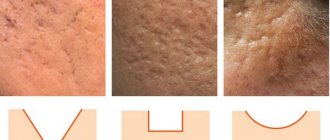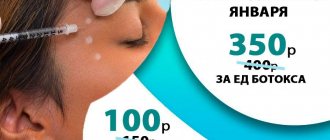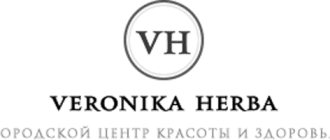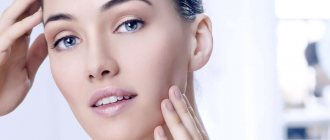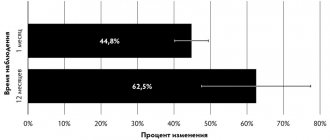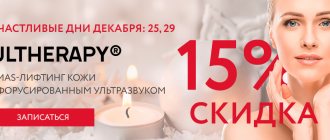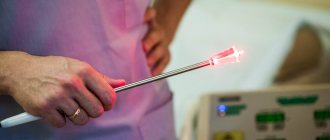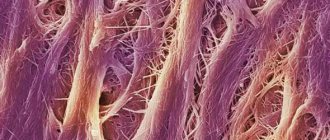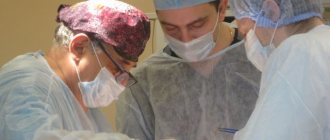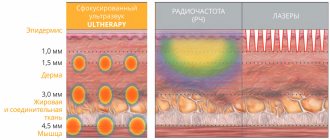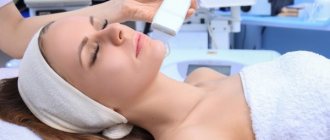SPRS THERAPY
Just 2 visits
Your own biomaterial
No consequences of the procedure
Effect for life!
SPRS therapy ® is a personalized complex of diagnostic and therapeutic procedures for skin restoration, based on the use of the patient's own skin cells - fibroblasts.
SPRS therapy® is the only method that allows you to fight not only the external manifestations of skin aging, but also the causes of aging at the level of its microstructure. With age, the number of fibroblasts in the skin, which are responsible for its youth and beauty (since these are the cells that produce collagen, elastin, hyaluronic acid), decreases significantly (as scientists have shown - by almost 40%), and their ability to synthesize these so important for the skin also decreases. substances. And SPRS therapy makes it possible to compensate for this deficiency by introducing millions of young and active own fibroblasts into the skin, which, after being introduced into the skin, fully take root (as the body’s own cells) and actively produce all substances important for the skin.
All other cosmetic methods only stimulate the fibroblasts present in the skin to work, the number of which, as we know, decreases significantly with age.
Operating principle
SPRS autoimmune technology is based on the introduction of fibroblasts to the patient, carefully selected from his own biomaterial. Only active fibroblasts can be cultured in the SPRS bank. A cellular preparation produced from fibroblasts is injected into the affected area. Unlike other anti-age procedures, only SPRS therapy provides a dramatic increase in the number of cells producing collagen and elastin.
Results of SPRS therapy:
- Age-related skin changes are eliminated.
- Wrinkles are smoothed out.
- The firmness and elasticity of the skin is restored.
- Pigment spots lighten, healthy skin color returns.
- Acne manifestations are reduced.
- Scars and stretch marks become less noticeable.
The procedure consists of several stages:
- Skin biopsy (skin sample) is taken from the patient’s area behind the ear. The sample size is up to 1 cm in diameter. This area is least exposed to UV rays. The resulting wound is treated and heals on its own.
- SPRS diagnostics - using laboratory methods, a skin examination is performed that allows one to evaluate the characteristics of fibroblasts and their physiological activity. Based on the data obtained, an individual skin passport can be compiled.
- Creation of an SPRS bank - fibroblasts are grown from a biopsy sample in the laboratory over a period of 6-7 weeks. During the cultivation process they are subject to selection. Only young and active cells are stimulated.
- Cryopreservation of the SPRS bank - all fibroblasts are placed in a specialized storage facility.
- Production of SPRS preparation – the required number of fibroblasts is extracted from the SPRS bank for the production of a cell preparation.
- Administration of suspension – the drug is injected into the patient’s skin. As a result, the synthesis of collagen, elastin and hyaluronic acid is activated, and natural processes of tissue rejuvenation are launched.
Is SPRS THERAPY® painful?
The administration of the SPRS® drug, like the intradermal administration of any other cosmetic drug, is quite painful. Therefore, an anesthetic cream is applied to the skin an hour before the procedure.
After administration of the drug, depending on the individual characteristics of the skin, it is possible that small bruises and swelling may appear, which disappear on their own within 5–7 days.
All about fibroblasts. What do they have to do with skin aging?
Fibroblasts are skin cells responsible for the formation of collagen. And collagen is a natural protein that is the primary component of the second layer of skin (dermis). Its structure and support is formed by a network of collagen fibers. It is thanks to collagen that you can smooth out wrinkles, rejuvenate the skin and the entire body. The main function of fibroblasts is the production, organization and renewal of dermal components. Fibroblasts create collagen, elastin, hyaluronic acid, and growth factors. Skin fibroblasts are grown in laboratory conditions using a patented technology approved for use by Roszdravnadzor. The use of fibroblasts makes it possible to increase the required number of functionally active cells in areas of the skin requiring correction. After transplantation, the number of fibroblasts in the skin increases, due to which the microstructure of the skin is restored. As a result of the procedures, hydration improves, skin elasticity increases, and the number and depth of wrinkles are significantly reduced. Russian and foreign researchers have conducted many clinical trials and have proven the clinical effectiveness and safety of facial plasmolifting, both for the correction of age-related changes and for post-acne scars. Laboratory studies have proven that the drug contains skin fibroblasts and not other cells. Fibroblasts actively synthesize collagen, elastin, growth factors, hyaluronic acid and other essential components of the dermis.
Definition and mechanism of action
A method for treating OSA by creating continuous positive airway pressure was proposed by Sullivan CE et al. in 1981. In the English-language literature, the method is called CPAP - an abbreviation for the English words Continuous Positive Airway Pressure. We will also use the term CPAP therapy. The mechanism of action of CPAP therapy is quite simple. If the airways are slightly “inflated” during sleep, this will prevent them from collapsing and eliminate the main mechanism for the development of the disease. To create positive pressure, a small compressor is used to deliver a constant stream of air at a certain pressure into the airway through a flexible tube and nasal mask. It is also advisable to use a heated humidifier, which provides heating and humidification of the air entering the respiratory tract.
Rehabilitation period
After administration of the SPRS drug, the patient may be bothered by standard side effects from multiple intradermal injections - minor swelling, which disappears within a few hours, and slight bruising at the injection sites, which completely disappear after 5-7 days.
During the rehabilitation period, it is important to follow some rules to get excellent results:
- Refrain from significant physical activity, as well as sudden temperature fluctuations - you should not take a contrast shower or hot bath, or visit saunas and steam baths.
- Adjust your diet: exclude hot, spicy foods, as well as alcohol for a period of 4 weeks after the procedure.
- Quit smoking (or reduce the number of cigarettes) for at least 4 weeks and visits to the solarium (for a year).
- It is advisable to use vitamin C creams for one month, and also use sunscreen with a factor of at least 50 when going outside.
If there are no contraindications, a specialist may recommend taking vitamin C orally - at a dose of 1000 mg daily after meals, for 3-4 weeks.
SPRS rejuvenation program
Skin diagnostics
At the preliminary stage, the skin is examined at the microtexture level using modern laboratory methods. The ability of fibroblasts to divide and their functional activity (readiness for the synthesis of collagen and other components of the intercellular matrix) is assessed. Based on the data obtained, an individual program is developed to correct existing age-related changes and prevent aging.
Based on the diagnostic results, the patient receives a Skin Passport, which contains all individual characteristics, as well as detailed information on the rejuvenation program. Thus, in each specific case, recommendations are provided for the development of an individual program for correcting existing skin changes and preventing skin aging. The passport contains information on the recommended number of courses of therapy, the timing of their implementation, as well as a protocol for the use of cosmetic procedures, taking into account the degree of their impact on the skin in order to achieve a lasting aesthetic result without damage to fibroblasts.
Creation of a drug for SPRS therapy
To obtain fibroblasts, a skin fragment (about 5 mm in diameter) from the area behind the ear is used. Fibroblasts are grown using a patented method, and only cells that have retained a high ability to divide and synthesize components are selected for the preparation (weakened cells are removed). A sample of cellular material from each patient undergoes mandatory safety testing to exclude viral and bacterial agents. The process of growing fibroblasts takes about 6 weeks. Cultivation is carried out on the basis of the patient’s own blood plasma, at a temperature of 36.6, i.e. under conditions identical to natural biological ones. The output is a culture of living active fibroblasts, ready for their fruitful work. Fibroblasts should not be confused with stem cells, whose activities are not fully understood. Fibroblasts are mitotic cells that are at the peak of their functionality, but have lost the ability to divide and adapt to other cells in the body. This means that they a priori cannot cause any cancer or other diseases associated with cell changes.
Procedure
For patient comfort, an anesthetic cream is applied to the skin an hour before the procedure. A drug containing functionally active fibroblasts is injected into the skin using thin needles (as in mesotherapy). After the procedure, minor swelling and slight bruising at the injection sites are possible. Having penetrated the dermis, active fibroblasts begin to synthesize collagen, elastin, hyaluronic acid and other important elements of the intercellular matrix, thereby restoring the physiological balance and natural processes of renewal of the dermis in the skin. A pronounced effect is observed after the first procedure, and it increases over several months after the end of the course of treatment. As a result, the face looks like it did in the prime of youth. The texture and tone of the skin are evened out, as fibroblasts have the ability to lighten hyperpigmentation.
As a rule, one course of SPRS therapy consists of 2 procedures with an interval of 4–6 weeks, during which 60,000,000 living fibroblasts are delivered to the skin. However, this protocol is subject to change, since SPRS therapy is an exclusively personalized approach to skin restoration for each patient. The number of injected fibroblasts always corresponds to what their deficiency was shown by skin analysis at the microtexture level. In some cases, it can be 50,000,000 cells, and sometimes 120,000,000. You can rejuvenate throughout your life, at intervals of several years, always maintaining your skin at the peak of functional activity.
SPRS therapy eliminates the possibility of developing allergic reactions and other side effects, since the patient's own skin cells are used.
SPRS therapy is perfectly combined with all methods currently existing in cosmetology and plastic surgery.
Indications and contraindications for the procedure
SPRS therapy belongs to the category of procedures that can be performed at any age when the patient’s skin requires it.
Indications:
- age-related changes - thinning of the skin, decrease in its density and elasticity, wrinkles;
- the need for recovery after acne - eliminating spots and scars, evening out the relief and tone;
- correction of scars and hyperpigmentation of other origins;
- photodamage to the skin;
- prevention of wrinkle formation.
Conveniently, to re-produce an SPRS preparation, a new biopsy sample is not required, since the cryobank created during the initial treatment is already stored in the HSCI cryostorage, from which an ampoule with fibroblasts can be removed, thawed and used for processing the cell preparation.
But there are also contraindications to the use of SPRS therapy; you must notify your doctor about them at the first visit.
Absolute contraindications:
- connective tissue pathologies of autoimmune origin (for example, lupus erythematosus, vasculitis or scleroderma, as well as rheumatoid arthritis);
- tendency to keloid scars;
- pregnancy and lactation;
- oncological diseases.
Relative contraindications:
- decompensation of chronic diseases;
- purulent-inflammatory skin diseases;
- viral and infectious diseases in the acute period;
- mental illness;
- allergic dermatitis.
In case of absolute contraindications, SPRS will have to be abandoned, and if there are relative contraindications, you should listen to the doctor’s recommendations and only then resort to this rejuvenation technique.
Result after SPRS therapy
When comparing the price of SPRS therapy and other procedures for skin renewal in Moscow clinics, you need to understand that the approach is comprehensive and individual, which is why it costs more. However, the result will be impressive:
- skin color improves, age spots become less noticeable;
- the density and elasticity of the skin increases;
- the number and depth of wrinkles gradually decreases;
- skin turgor becomes the same as in youth.
SPRS therapy is often used to prepare the skin for plastic surgery or during the recovery period after surgery - tissues regenerate much faster, and the rehabilitation period is reduced.
In general, the effect will last for at least two years, and then the procedure can be repeated again thanks to the created cryobank and its storage in a cryo-storage facility (as evidenced by a personal certificate of storage of one’s own fibroblasts). By regularly maintaining the number of young and actively functioning fibroblasts, the patient will be able to slow down skin aging, as well as give it youth, radiance and beauty.
Clinical result from the procedure
Biological effect:
- An increase in the number of functionally active fibroblasts in the dermis;
- The biosynthetic activity of transplanted fibroblasts persists for at least 12 months;
- Stimulation of the biosynthetic activity of resident dermal fibroblasts;
- Increasing the amount of collagen in the dermis
Clinical effect:
- Increased skin thickness and density;
- Reducing the number and depth of wrinkles;
- Improving skin texture and turgor;
- Reducing the severity of age spots
After the procedure (introduction of cells), the skin becomes more elastic in all areas of the face, especially in the cheek and paraorbital areas. The texture of the skin improves, the severity of age spots decreases, and wrinkles also become much smaller.
Already 10-14 days after completing the course of cell therapy, patients begin to notice an improvement in the condition of their facial skin, which is expressed in improved color and contours, increased elasticity and thickness of the skin, and a decrease in the depth and number of wrinkles. Quite often, the first signs of improvement in skin condition appear after the first procedure. The effect increases over time - from 1 to 1.5 years, but this period is determined individually. Cells transported into the skin last a lifetime. The depth of wrinkles decreases within 6 months: in the periorbital region by 92%, in the buccal region by 87%, in the perioral region - by 55%, in the décolleté and neck area - 95%. These data are taken in comparison with the initial level of skin condition. There are also cases when wrinkles in the paraorbital area are reduced even by more than 4 times.
Fibroblasts after transplantation are distributed in the dermis in small groups and do not divide (the latter fact completely excludes the possibility of developing neoplasms). 6 months after the procedures, groups of transplanted fibroblasts are recorded in the skin and the number of collagen fibers that were formed after the procedures increases.
